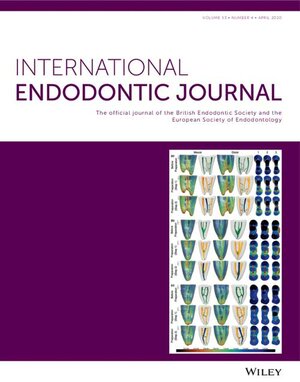Association between endodontic, patient-related factors and severe odontogenic infections; a South Australian retrospective audit
Abstract
Aim
Endodontic conditions are associated with severe odontogenic infections. However, no studies have explicitly explored their role in the infectious process. This study aimed to assess associations between tooth-related and patient-related factors resulting in severe odontogenic infections and clinical care needs.
Methodology
A retrospective audit was conducted of all records of patients who presented with severe odontogenic infections requiring admission between 2018 and 2023, at the largest public hospital in South Australia. Pericoronitis, postoperative, and non-odontogenic infections were excluded. Associations between tooth-related factors (type, location, presence/absence of caries, restorations, root canal filling, apical periodontitis, and space of infection), patients-related factors (diabetes and smoking statuses), clinical management (length of admission, intensive care unit admission number of days, and need for general anaesthesia) were explored. χ2, Mann–Whitney's test and Fisher's exact test were used for statistical analysis, and the level of statistical significance was set at 5%.
Results
Of 382 records identified, 189 met the inclusion criteria. Mandibular (95.8%) molars (92.1%) were the most commonly offending teeth. Eight (4.2%) were root canal filled, 27 (14.3%) restored, 166 carious (87.8%), and 181 (95.8%) were associated with an apical radiolucency. Over half the sample were smokers (56.9%) and 16.4% were diabetics. The most common infection involved the submandibular space (56.1%). Intensive care unit admission was required for 157 patients (83.1%), and stay depended on the space of infection, with buccal space having the shortest duration (median 1 day) compared with submandibular (median 4 days) (p < .001). Need for general anaesthesia was associated with Ludwig's angina (n = 3, 100%) (p = .04) and submandibular space infection (n = 104, 98.1%) (p < .001), plus intensive care unit admission (p < .001). Conversely, for buccal space infection, the need for general anaesthesia was lower (n = 5, 23.8%). No further significant differences were found.
Conclusion
Untreated mandibular molars with apical periodontitis were the most frequent tooth-related findings. Results from the present study suggest associations between the most severe clinical presentations (Ludwig's angina and submandibular infection) and complexity in clinical care. Buccal space infections required the least complex management.


 求助内容:
求助内容: 应助结果提醒方式:
应助结果提醒方式:


